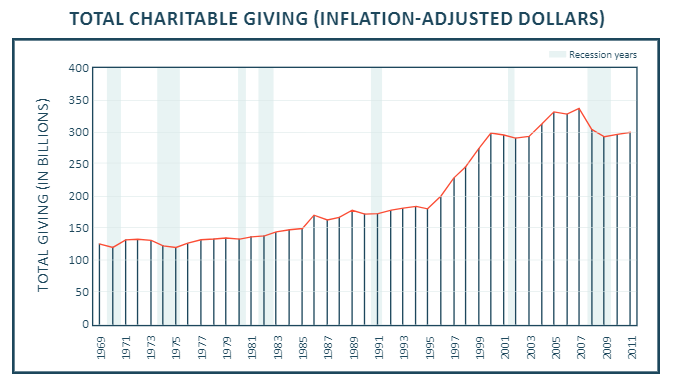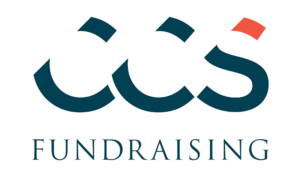The ability to access and understand the signals within our data has reached peak importance within both the nonprofit sector at large, and across healthcare organizations in particular. In fact, the future of healthcare philanthropy will be built on a foundation of data-driven insights.
Organizations with the ability to aggregate and analyze their information will emerge as thought leaders, able to assess their fundraising to date and identify opportunities for growth.
Those with sufficient confidence in their data to act on the outcomes of that analysis will be able to capitalize on found opportunities, and secure the funding required to bring their visions to life.
In recognition of this potential, many healthcare organizations are seeking to modernize the way they manage information, taking a critical look at how data is gathered, entered, analyzed, and valued, as well as the tools and protocols utilized throughout the process. Hospitals and medical centers are investing in improvements to their IT infrastructure, from new Customer Relationship Management (CRM) systems to record donor interactions and planned asks, to Software as a Service (SaaS) tools to centralize e-mail communications and create dynamic reports. Additionally, as healthcare consolidation/merger and acquisition activity continues to increase, health systems are streamlining IT operations in order to gain visibility into donor and grateful patient activities across an expanded network. Accompanying these structural changes are revised business processes and guidelines, requiring teams to learn new ways of working.
The Case for Change Management
Change management, an organization’s systematic approach to engaging with and supporting teams through times of transition, is vital for helping ensure changes are understood, controlled, and embraced by staff, and ultimately successful.
Investments in new technologies, systems, and data quality, and the insights they generate have promise, but only if they are:
- Understood: do all staff know the purpose of these tools, and how each will be used to monitor and drive fundraising strategy?
- Focused: is it evident what information matters to hospital and development leadership, and to each member of the team? Is it clear where this information is sourced?
- Relevant: are the metrics used to track and evaluate progress aligned with the organization’s strategic objectives? Do they reflect the institution’s values?
- Trusted: is leadership confident in the accuracy of the data to act when appropriate?
- Actionable: does the data presented make it clear what needs to happen next?
It doesn’t matter how advanced an organization’s tools are if the rationale behind their selection, design, and desired use isn’t clear to the people who rely on them. Building a culture of awareness is key to increasing the receptivity to using data to drive decisions. It is not enough to gather feedback at the outset of a systems project and reveal a solution at the end. All stakeholders must be engaged throughout the process, and invited to co-create a narrative that captures the logic behind choices made at every stage.
This is especially important for healthcare institutions, where coordination between fundraising staff, physicians, patients, development, and hospital leadership is required, and effective philanthropy is reliant on insights and information from all parties. Coupling any information systems project plan with a parallel plan focused on change management will help ensure that all staff see the logic behind the implementation of new systems, processes, and protocols, feel empowered to make educated decisions in line with an institution’s data strategy, and that the practice of healthcare fundraising remains truly patient-centric.
Navigating Change in a Complex Operating Environment
Leveraging healthcare data for fundraising purposes means addressing the complexity inherent in serving a patient population. Solutions for the aggregation of data for analysis must be HIPAA-compliant, preserving the security of protected health information (PHI) across all platforms. Fundraisers must be able to develop prospect strategies in partnership with clinicians and communicate progress to both development and hospital leadership. Above all else, the collection and use of data for development activities must not interfere with the quality of patient care.
Navigating these intricacies and aligning the development team around the information that matters most is as much a change management exercise as it is a technical one. A good data strategy makes it clear what information leadership is choosing to use to oversee progress, and why. Well-designed systems and processes make it possible for the right stakeholders to access that information in a secure and efficient way. Ongoing socialization of the logic behind the insights is what makes it part of an organization’s culture. Understanding how one’s day-to-day work contributes to an institution’s big-picture objectives is what makes that work meaningful.
Three Guiding Principles of Change Management
- Change takes longer than you think
- Don’t be afraid to dedicate time and resources to systems design projects. It’s worth putting in the time to achieve your target results as well as widespread utilization of new tools and processes
- It’s better to overcommunicate than to risk leaving stakeholders out of the conversation
- The process works when everyone steps up
- Visible leadership commitment makes a difference – showing up to meetings and using new systems, reports, and data in managing the team adds credibility and reinforces the importance of the work
- Encourage and create a safe space for suggestions, criticism, agreement, and dissent as the process moves forward; allow everyone to bring their full spectrum of thoughts and emotions to the table
- Keep the momentum going
- Having a central driver is key for keeping stakeholders organized and the project on track
- If there are areas where your project team is getting stuck, don’t be afraid of imperfect solutions – keep pushing forward, and revisit at a later date
- Design for the rule, not the exception. There will always be scenarios that you haven’t accounted for at each turn. If what you aim to accomplish with your data is well-understood, trust your team to make the right decisions given the circumstances
- Celebrate milestones throughout a lengthy project to keep morale high
Implementing an Effective Change Management Strategy
- Invite Everyone to Help Design the Future
- Intentionally and proactively engage all stakeholders in assessing the institution’s current state and envisioning the desired end result. Everyone has something to bring to the table, regardless of level or role
- Conduct one-on-one or small group meetings to understand how data is currently generated, gathered, entered, referenced, and valued, what tools and systems are used, challenges from each person’s perspective, high-level needs, and specific functional requests
- Develop a Data Narrative
- With leadership, define the values that drive your work, the questions that support those values, and the key performance indicators/metrics required to answer those questions
- From these conversations, develop a logical and approachable data narrative to contextualize systems and process changes
- Help all staff see the importance of their work in helping the institution achieve its top objectives
- Use storytelling techniques to communicate the rationale behind process changes so they are easily understood, explainable, and remembered by others
- Socialize Your Solutions
- Devote time and resources to training the team on your new way of working
- Crowdsource examples of real-life tasks and challenges and show how they work within the context of your new tools and processes
- Provide an opportunity for staff to share feedback on what works and what doesn’t, and whether proposed solutions are meeting their needs
- Create an environment where staff members feel comfortable vocalizing their challenges. A staff assistant may not be eager to speak up about something they don’t understand while their manager is in the room
- Consider using tools like Poll Everywhere that allow participants to ask questions and share feedback anonymously
Case Study: A Plan in Action
A focus on change management was central to the success a leading academic medical center found in optimizing its approach to information management. Following a successful campaign, the institution partnered with CCS to evaluate its IT infrastructure, systems, and processes in preparation for ambitious future growth.
The project began with a deep dive into the structure of the medical center’s CRM and associated systems, coupled with an analysis of the processes by which data was entered, managed, and used. All 100+ members of the team were invited to share their perspectives, either in person or via an e-survey. Following over 30 hours of conversation with leadership and staff representing all facets of development, CCS Fundraising delivered a set of high-level and tactical recommendations to support the creation of a set of core reports to achieve consistency and visibility around key institutional metrics.
To operationalize these recommendations, medical center leadership convened a cross-functional working group tasked with documenting the structure, definition, and use of each key performance indicator comprising the reports. Meeting on a weekly basis to start, the working group engaged in healthy dialogue about the intended purpose of each metric, and how to maintain the integrity of data across systems. The group’s diversity made it possible to understand how each department would be impacted by changes made, and with decision makers present for every discussion, the group had the authority to act.
As each new definition, process, and report was formalized, the institution invested time socializing these changes in multiple formats across each unit, including in-person training, hands-on workshops, and small group meetings with opportunities for direct feedback. Medical center leadership elevated this work to a place of importance by providing updates at all-hands meetings, and kept staff informed as the project progressed. Additionally, given the consistency of messaging around intent and objectives, the institution strengthened working relationships with colleagues across the University through the course of the project. With clarity of purpose, everyone worked towards the same goal.
Today, the academic medical center is preparing to roll out a set of dashboards tailored to, and reflective of, the staff’s extraordinary work, an achievement built from the efforts and insights of every person on the team.
From Theory to Practice
For a healthcare institution, embarking on a systems optimization project means contending with complexity, balancing the priorities of multiple stakeholders, and wrangling data from disparate sources, all while preserving the integrity of the patient experience.
Before your project begins, spend time reflecting on the culture of your organization: how your staff communicates, shares feedback, and how each member of the team prefers to receive information. Be thoughtful about how you convene your project team: select a diverse group of stakeholders representing all user groups and levels. Anticipate pain points and devote time and resources to socializing solutions within and across teams. Help everyone see the importance of their work in the context of the organization’s goals. When done well, the process of bringing data together brings teams together, too.
CCS Fundraising is a strategic fundraising consulting firm that partners with nonprofits for transformational change. Members of the CCS team are highly experienced and knowledgeable across sectors, disciplines, and regions. With offices throughout the United States and the world, our unique, customized approach provides each client with an embedded team member for the duration of the engagement. To access our full suite of perspectives, publications, and reports, visit our insights page. To learn more about CCS Fundraising’s suite of services, including Systems projects, click here.

